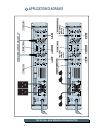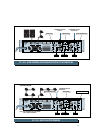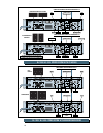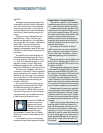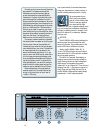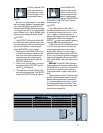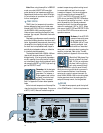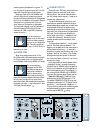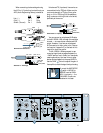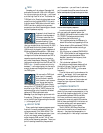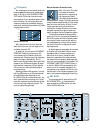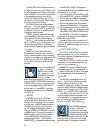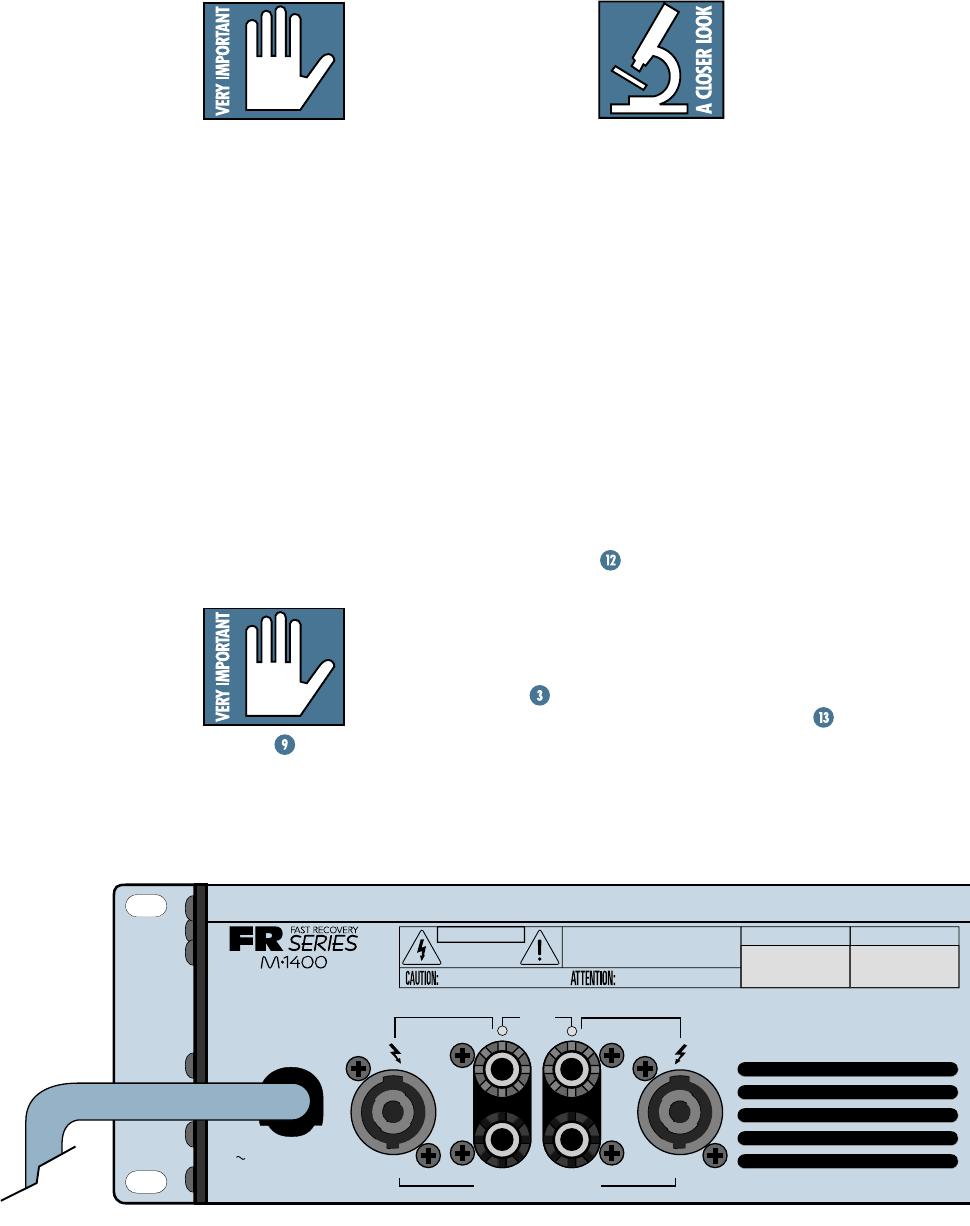
16
In fact, you can use both the 1/4" jacks and
the binding posts simultaneously. Just remem-
ber that doing so creates two parallel loads.
Please see “Do The Math: Ohms, Loads and Such”
in Appendix E to learn about speaker loads.
Be Aware: Should you
choose to terminate your
speaker cables with the
1/4" TS plugs, make sure
nobody confuses these
cables with line-level cables, (i.e., guitar
cables). Guitar cords are not designed to
handle the high current output of power am-
plifiers. And line-level inputs (like the signal
input on a mixer) are not designed to handle
speaker-level voltages.
If you’re using low impedance loads at high
power levels, we recommend that you use the
binding post speaker outputs rather than the
1/4" TS jacks. Although 1/4" jacks are conve-
nient and easy to use, they were not designed
to handle high-level currents.
Note (M•1400 only): In addition to the
binding posts, the M•1400 also has Speakon
®
connectors for connecting the speakers to the
amplifier. These are locking connectors that
are easy to attach and are designed to handle
high power levels into low-impedance loads.
Pin 1+ is positive (+) and Pin 1– is negative (–).
Before making connections
to an amp or reconfiguring
an amp’s signal routing,
turn the amp’s
GAIN
controls down, turn the
POWER
off, make the changes, turn the
POWER
back on, and then turn the
GAIN
con-
trols back up. Although the M•1200/M•1400
amplifiers can handle “opens” (no connection)
and “shorts” (positive and negative signal lines
in direct contact), you don’t want the speaker
ends of live cables to zap every piece of equip-
ment they touch as they’re being dragged
across the stage.
Ordinarily, applying a posi-
tive voltage to a speaker’s
positive input and negative
voltage to the negative input
results in an outward excur-
sion of the woofer. But some woofers are built
with reverse polarity, meaning that the above
conditions result in an inward excursion.
If you’re not sure which type of speakers you
have, take a look at their literature. If you’re
still not sure, here is a simple test: take a 1.5V
flashlight battery and connect the positive
terminal of the battery to the positive (+) in-
put of the speaker, and connect the negative
terminal of the battery to the negative (–) in-
put of the speaker. Observe the motion of the
speaker cone. It should move out when voltage
is applied, and return to rest when voltage is
removed. Make sure all the speakers in the
system move in the same direction (there are a
few exceptions — some speakers are deliber-
ately designed with reverse-polarity woofers).
INPUT
The M•1200/M•1400 amplifiers give you a
choice — they have the traditional XLR inputs,
as well as 1/4" TRS (tip-ring-sleeve) input jacks.
Sonically (and electrically) they’re identical,
so choose either one. Since these two inputs
are in parallel (the THRU
jacks are in
parallel with the inputs as well), you shouldn’t
connect more than one source to the
SIGNAL
INPUT
jacks. Each can be used with either
balanced or unbalanced signals.
M•1400 Rear Panel
CH
1
CH
2
SPEAKER OUTPUTS
+
––
+
SERIAL NUMBER
MANUFACTURING DATE
RISK OF ELECTRIC SHOCK
DO NOT OPEN
REPLACE WITH THE SAME TYPE FUSE AND RATING.
DISCONNECT SUPPLY CORD BEFORE CHANGING FUSE
UTILISE UN FUSIBLE DE RECHANGE DE MÊME TYPE.
DEBRANCHER AVANT DE REMPLACER LE FUSIBLE
WARNING:
TO REDUCE THE RISK OF FIRE OR ELECTRIC SHOCK, DO NOT
EXPOSE THIS EQUIPMENT TO RAIN OR MOISTURE. DO NOT REMOVE COVER.
NO USER SERVICEABLE PARTS INSIDE. REFER SERVICING TO QUALIFIED PERSONNEL.
CAUTION
AVIS:
RISCQUE DE CHOC
É
LECTRIQUE — NE PAS OUVRIR
MONO
BRIDGE
CONCEIVED, DESIGNED, AND MANUFACTURED
BY MACKIE DESIGNS INC • WOODINVILLE • WA
98072 • USA • MADE IN USA • PATENTS PENDING
120 VAC 50/60 Hz
1500 WATTS
+
–
(MONO BRIDGE)
1400 WATTS
4 OHM LOAD MIN.
700 WATTS CH
2 OHMS LOAD MIN.



